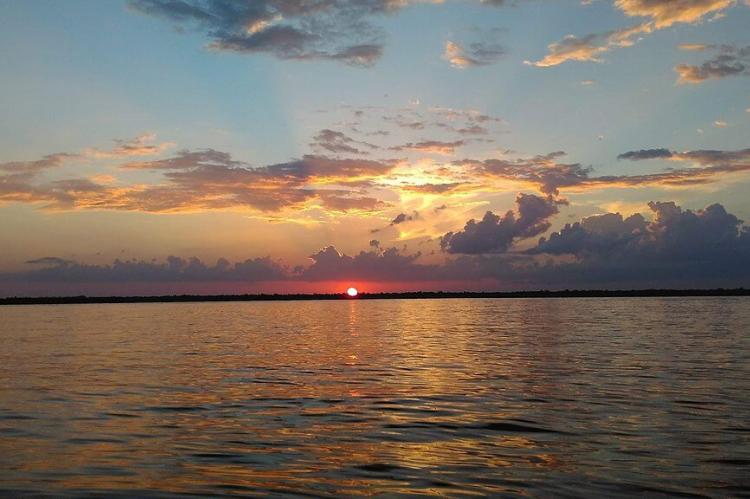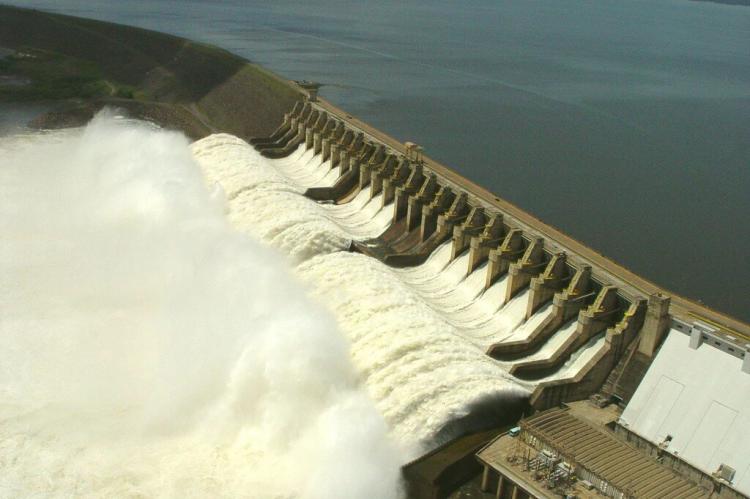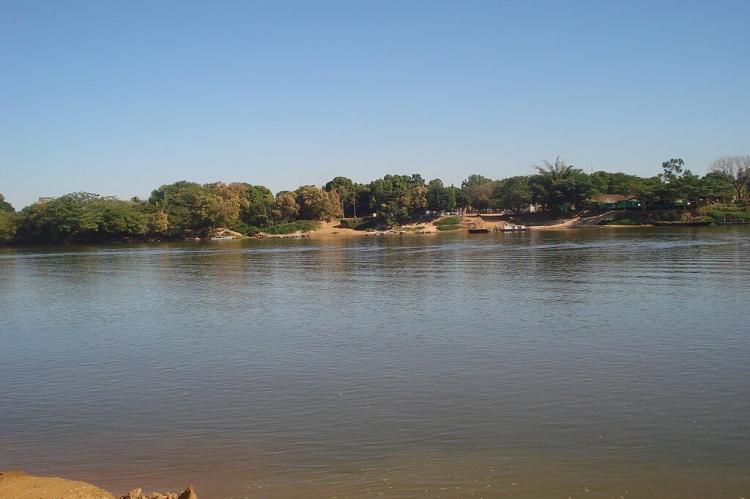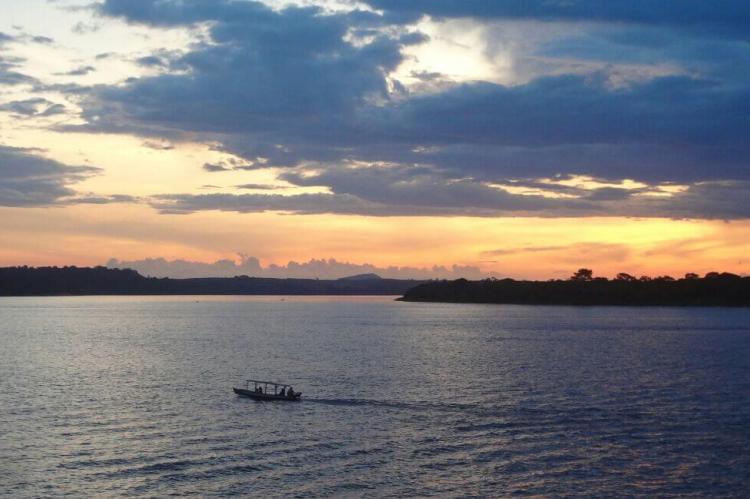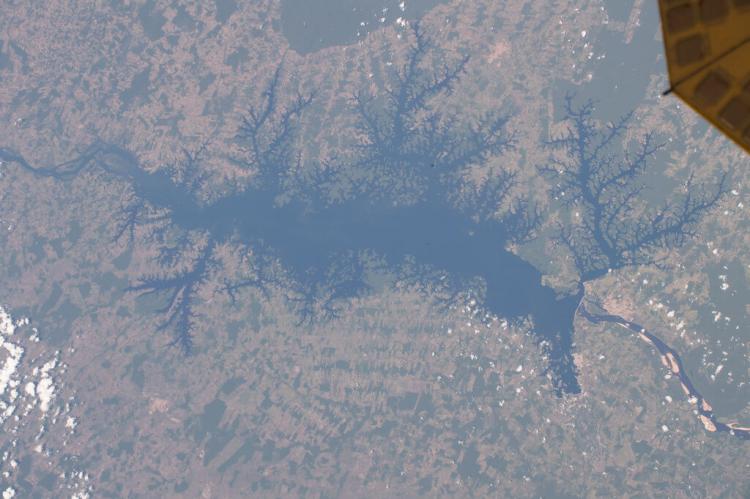Tocantins-Araguaia River System (Brazil)
The Tocantins River is the central fluvial artery of Brazil. The Araguaia River is also one of Brazil's major rivers and is almost equal in volume at its confluence with the Tocantins. The Araguaia-Tocantins watershed, in terms of energy production, is the second-largest in Brazil.
Tocantins-Araguaia River System
The Tocantins-Araguaia river system begins in the Brazilian Highlands. It flows into the Pará River distributary channel, a navigable arm of the Amazon River delta, which empties into the Atlantic Ocean at Marajó Bay.
The Tocantins River rises in the Serra dos Pireneus, west of the Federal District. However, its western tributary, the Araguaia River, has its extreme southern headwaters on the slopes of the Serra dos Caiapós.
Though popularly regarded as a tributary of the Amazon River, the Tocantins-Araguaia is technically a separate system since its waters flow into the Atlantic Ocean alongside those of the Amazon. Its drainage basin is over 800,000 sq km (300,000 sq mi).
Tocantins River
The Tocantins River is the central fluvial artery of Brazil, running in a northerly direction through the country's center for approximately 2,640 km (1,640 mi) until it discharges into the Atlantic Ocean just south of the Amazon River. The Tocantins is one of the largest clearwater rivers in South America.
The river rises in several headstreams on the central plateau. It then flows northward through Goiás and Tocantins states, looping westward along the boundary of Tocantins and Maranhão states. The river is of limited use for navigation as it is frequently interrupted by rapids and waterfalls.
Two tributaries, the Maranhão and Paranatinga, collect an immense volume of water from the surrounding highlands before the Tocantins' confluence with the Araguaia River. The combined river then turns northward again until it empties into the Atlantic Ocean.
There are five dams on the river, of which the largest are the Tucuruí and the Serra da Mesa:
-
Serra da Mesa
-
Cana Brava
-
Peixe Angical
-
Luiz Eduardo Magalhães (Lajeado)
-
Tucuruí
Araguaia River
The Araguaia River is one of Brazil's major rivers and is almost equal in volume at its confluence with the Tocantins River. It has a total length of approximately 2,627 km (1,632 mi). "Araguaia" means "River of the macaws" in the native Tupi language.
The Araguaia River's main tributary is the Rio das Mortes. Other important tributaries include the Bonito, Garcas, Tapirape and Formoso (or Cristalino) on the west and the Pitombas, Claro, Vermelho, Tucupa, and Chavante on the east.
The middle course of the Araguaia, in a marshland approximately 350 km (220 mi) northwest of Brasília, temporarily divides into western and eastern branches (the east branch is referred to as the Javaés River) to form the vast Bananal Island, an expanse of igapós or flooded forest, blackwater river channels and oxbow lakes called Cantão. The river also has approximately twenty smaller branches.
A large portion of the river's course is navigable all year, but below the Cantão wetlands, the river is interrupted by rapids. The Araguaia joins the Tocantins after flowing northward another 1,000 km (600 mi).
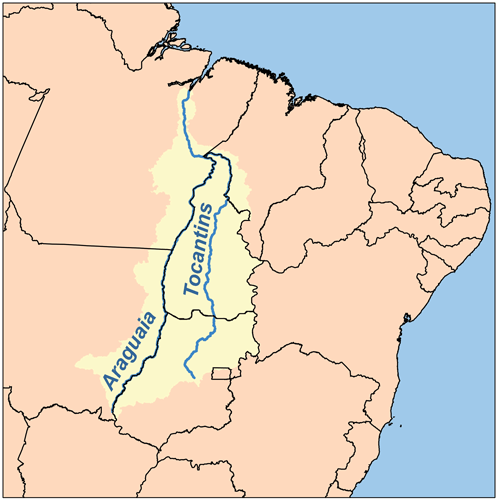
Map depicting the Araguaia-Tocantins watershed
Tocantins Basin (Araguaia-Tocantins Watershed)
The Tocantins basin, or Araguaia-Tocantins watershed, is a Brazilian river basin whose main rivers are the Tocantins and Araguaia. The basin covers approximately 767,000 sq km (296,000 sq mi), about 7.5% of Brazil's national territory. In terms of energy production, the basin is the second largest in Brazil.
The basin extends to the states of Tocantins, Goiás, Mato Grosso, Pará, Maranhão, and the Federal District. It is inserted into the Tocantins-Araguaia hydrographic region for water resource management purposes.
The flat, broad valleys, composed of sand and clay, of both the Tocantins and its Araguaia branch are overlooked by steep bluffs. They are the margins of the great sandstone plateaus, from 300 - 600 m (980 - 1,970 ft) above sea level, through which the rivers have eroded their deep beds.
Its length is approximately 2,500 km (1,550 mi) from its water source, in the Serra Dourada, to its mouth in the Marajó (Pará) Bay. It has an elongated configuration, with altitudes generally varying between 350 - 500 m (1,150 -1,650 ft), although in some cases, it reaches more than 1,000 m (3,280 ft).
Biology
The middle and lower river basins are in the Xingu-Tocantins-Araguaia moist forests ecoregion. This area is an integral part of the Amazon biome; however, the Araguaia River is not a tributary of the Amazon.
In its lower reaches, the Tocantins separates the Tocantins-Araguaia-Maranhão moist forests ecoregion to the east from the Xingu-Tocantins-Araguaia moist forests ecoregion to the west. The river acts as a barrier that prevents the dispersal of flora and fauna between these ecoregions.
The basin is the home of several large aquatic mammals, such as the Amazonian manatee, the Araguaia river dolphin, and the tucuxi, and larger reptiles, such as the black caiman, the spectacled caiman, and the yellow-spotted river turtle.
More than 350 fish species, including more than 175 endemics, have been registered. The most species-rich families are Characidae (tetras and allies), Loricariidae (armored catfish), and Rivulidae (South American killifish). While most species essentially are of Amazonian origin, some also show a connection with the Paraná and São Francisco rivers.
Several fish species migrate along the Tocantins to spawn, but the dams have restricted this. Following the construction of the massive Tucuruí Dam, the river's flow changed. As a result, some species have been adversely affected, and species richness has been substantially reduced in parts of the river.
The São Domingos karst in the upper Tocantins basin is home to an unusually high number of cavefish species (more than any other region in the Americas).
